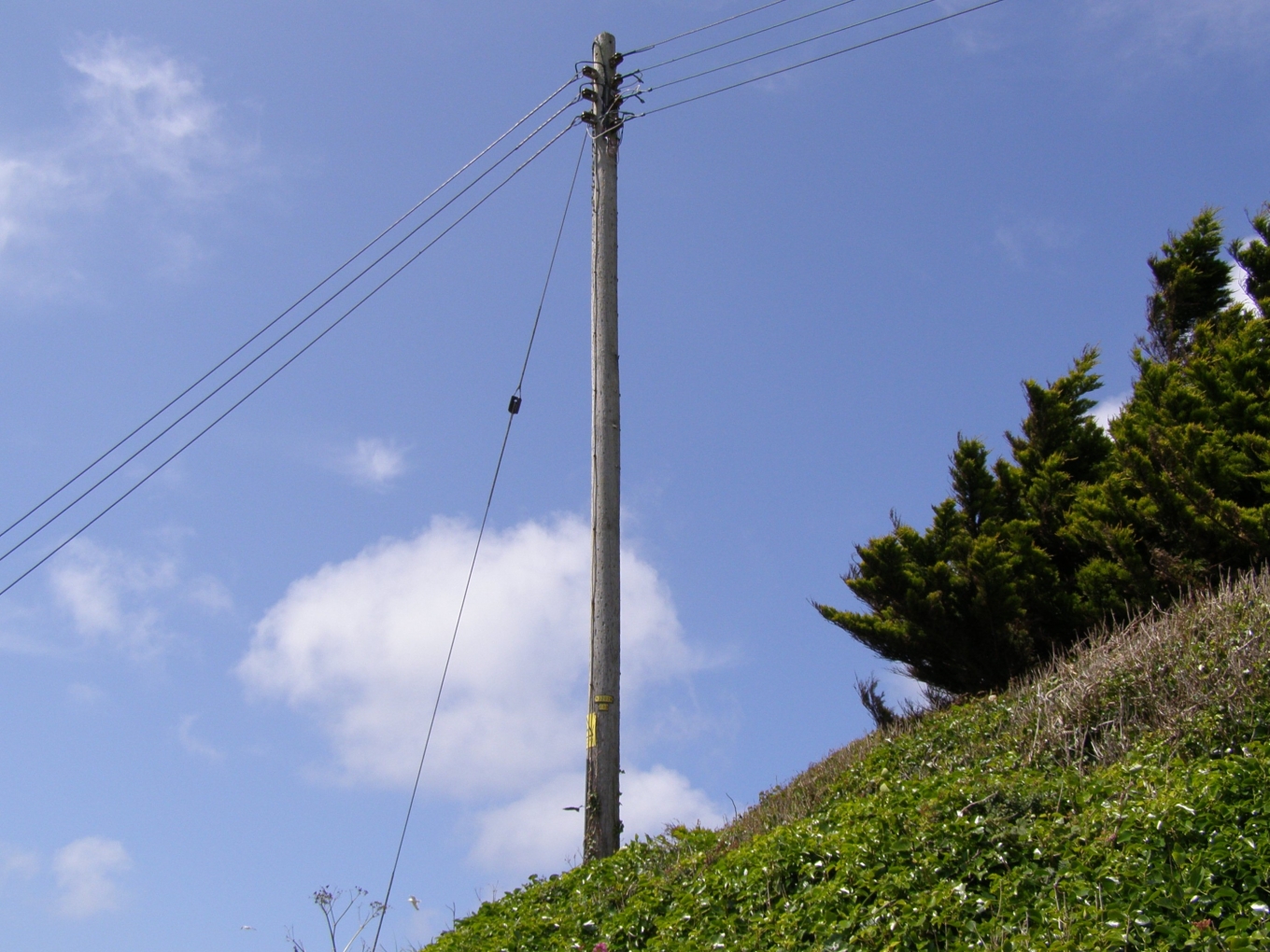Low voltage distribution
This page focuses on the low voltages that supply our homes with electricity once it has been transformed by the electricity system. These low voltage supplies can be via overhead or underground wiring. Low voltage underground wiring is the main source of magnetic fields in homes in most countries including the UK. The way in which low voltage wiring produces magnetic fields can be quite complicated, but explanations are provided below, as well as what EMFs are produced by low voltage overhead wiring.
In addition to EMFs caused by low voltage distribution, household wiring and appliances are a source of EMFs in homes.
Overhead low voltage distribution wiring
Low voltage wiring supplies homes via overhead wires or underground cables. For most of these supplies, the wires are wound tightly together (called an Aerial Bundled Conductor, or ABC), which means the magnetic fields cancel each other out almost completely, and so only a very small magnetic field is produced.
In some cases, overhead supplies have the wires spaced out, usually vertically, as shown in the photo. Because the wires are spaced further apart than the ABC, they produce slightly higher magnetic fields, but these are still only a small fraction of the public exposure limits.

The electric fields from both types of low voltage supplies are negligible.
The table below shows the typical magnetic fields you would measure from overhead low voltage distribution wiring.
| Magnetic field at distance from the overhead supply | |||
|---|---|---|---|
| Low voltage overhead distribution | Directly under wires | 10 m | 25 m |
| Vertical arranged wires | 0.22 µT | 0.10 µT | 0.04 µT |
| Aerial bundled conductor | 0.15 µT | 0.08 µT | 0.04 µT |
Underground low voltage distribution wiring
Most UK homes are supplied by underground low voltage distribution wiring, where the individual conductors are very close together within a single duct. In this case, current passes through a ‘phase conductor’ from a substation to supply our homes with electricity, and an equal and opposite current passes back to the substation via a neutral conductor. In this situation the currents in each conductor are equal and opposite and the wires are close together, so the magnetic fields cancel, and only a negligible magnetic field remains.
The wiring practice used in the UK is something called ‘Protective Multiple Earthing’ or PME. In PME, the neutral conductor also acts as the earth and has multiple earthing points along it. This means that the current returning to the substation along the neutral conductor isn’t always equal to the current in the phase conductor. This difference in current between the neutral and phase conductor is called a net current and that produces the magnetic fields from low voltage underground wiring.
Virtually every low voltage distribution circuit in the country has a net current, but its size varies depending on how each circuit is connected and the circuit impedance (how easy it is for electricity to flow).
Studies undertaken by National Grid found the average net current in a sample of underground distribution circuits in urban areas to be 3.6 A (at the point where they left the substation), which on average was 15% of the neutral current. Using an average net current of 4 A to calculate the magnetic fields from underground distribution wiring, the typical exposures would be:
| Magnetic field at distance from the underground cable | |||
|---|---|---|---|
| Underground low voltage distribution | Directly above cables | 10 m | 20 m |
| 4 Amps net current | 0.5 µT | 0.07 µT | 0.04 µT |